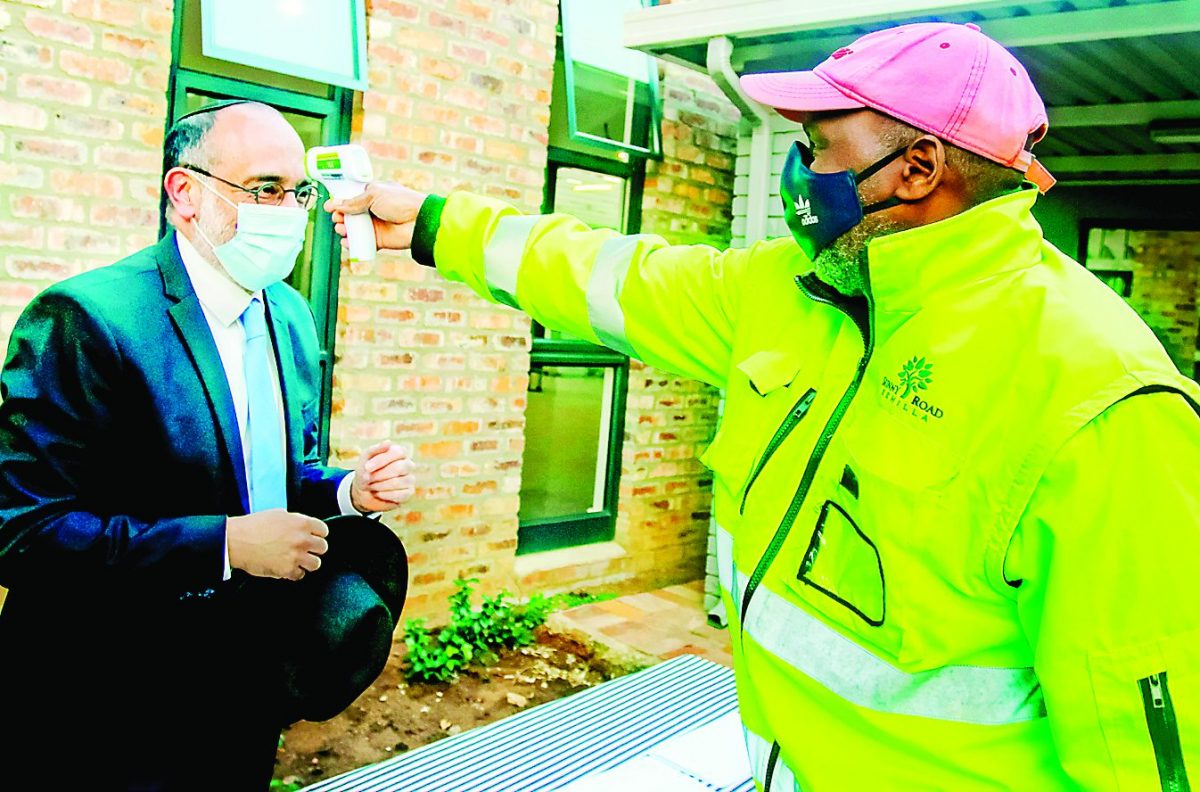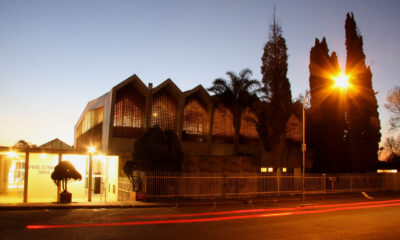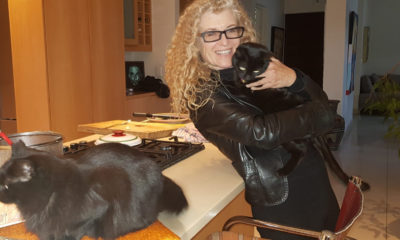
Featured Item

Congregants euphoric about reopening of shuls
After five months of silence and stillness, the sound of prayer is once again reverberating around shuls across South Africa as doors are opened to welcome congregants back.
From Sea Point to Sydenham, daily minyanim have become a regular fixture once more, and though strict protocols have altered the davening experience, South African Jewry is celebrating.
The long-awaited return became official last Thursday, as many shuls resumed services at the beginning of the month of Elul, with minyanim resuming at different points on Friday and the weekend at various shuls. In spite of the implementation of several limitations, the feeling across the community was one of euphoria.
“Five long silent months have passed without the sacred words of kaddish and kedusha, without G-d’s own word being read publicly in the Torah reading, without the collective power of others while we pray,” Chief Rabbi Dr Warren Goldstein said last week.
“We were away from our shuls to save lives, to protect each other from harm, to fulfil the Torah’s highest teaching – that life is more precious than anything else. But even knowing that we are fulfilling this great mitzvah hasn’t alleviated the pain of separation, the unmistakable sense that our lives were emptier without our beloved shuls. And now, as we return, we appreciate them more than ever.”
Shuls across the community celebrated the return to religious normality, with small minyanim of 15 to 20 men gathering on shul grounds in a socially distanced setting after undergoing virus screening and temperature checks. In order to avoid too large a gathering, many shuls implemented an online or WhatsApp booking system, requiring that congregants reserve a space within the permitted number of places.
“The energy and excitement were tangible when we returned to shul on Thursday, and recited Hallel for Rosh Chodesh,” Rabbi Yossi Goldman of Sydenham Shul told the SA Jewish Report. “We’d been having quasi-minyanim over Zoom for weeks from my house, and for the first time in a long while, we could broadcast from a live minyan at shul. It was incredible.”
Goldman said that the small minyan gathered in the campus’ shtibl for the service, wearing masks and observing two-metre distancing. Services continued through Shabbat and the weekend, (with women attending some of the minyanim as well). A Barmitzvah was also celebrated.
Rabbi Gabi Bookatz of Waverley shul had a similar experience.
“It was inspiring to arrive at that first minyan,” he said. “You felt like you weren’t just re-entering a shul, but becoming part of the community again. It was more than just a space. At last, here we were in person, davening together, hearing leining and the shofar.
“Being back at shul was like being back with old friends. Seeing the Torah was like seeing a friend you’ve not seen for years. There was a real sense of home coming, and I could see the inspiration on people’s faces.”
Not to be outdone, even smaller shuls which couldn’t accommodate socially distanced congregants indoors relocated their minyanim to outdoor spaces. Such was the case at Glenhazel’s Beit Chana, where 15 congregants seated at individual tables used a roofed brocha area to resume their minyan on Wednesday last week.
“It was a really powerful moment to be back,” said the shul’s rabbi, Ron Hendler. “So many little things you overlooked before really stood out. On Friday morning, one of our congregants asked if a friend of his could join the minyan. We screened him, took his details, and he joined us.
“We gave the man an aliyah, and when he started to say the bracha on the Torah, he began to cry. I felt like crying at that moment. I could see he had such a deep feeling after not having been in a shul all these months.”
The minyanim people are joining differ considerably from those held pre-COVID-19. Beyond social distancing and sanitisation, no singing along is permitted, with only the chazzan permitted to raise his voice for others to hear and respond. Although congregants can again recite kaddish, practices such as Torah reading have had to be adjusted, with no one but the person leining allowed to approach and touch the Torah or the bimah, and no kissing of the Torah scroll allowed either.
Nonetheless, congregants have taken to the changes with commitment and responsibility, determined to keep themselves and their community safe.
“There are a lot of things we’re used to doing that we just can’t do right now,” said Craig Stollard, a veteran Hatzolah responder who returned to his minyan at Addas Yeshurun, Fairmount. “It’s very exciting to return to a structure and familiarity, but a lot has changed. It’s strange that we have to remind ourselves not to do what we’re so used to doing, like kissing the Torah or schmoozing with people after the service.”
The lack of certain shul elements is made up for by an enhancement of others, Stollard said.
“What it means to daven has changed,” he says. “The intensity of tefilah has increased greatly. People are really focused, and not allowing themselves to be distracted as they may once have been. They’re staying until the end of the service, and whatever time constraints they may have had pre-COVID-19, are suddenly not so constraining.”
These watershed moments come after weeks of planning and strategising, with much discussion taking place between Goldstein, a shul support task team, numerous community stakeholders and experts. The latter include emergency medicine specialist Professor Efraim Kramer; renowned virologist Professor Barry Schoub; and Dr Richard Friedland, the chief executive of Netcare.
Kramer has spent the past six weeks travelling across the country to inspect shuls and help them prepare to welcome their congregants back. To date, he has visited 61 shuls in Johannesburg and Cape Town, with Durban to follow this week.
“We’ve been painstakingly scrupulous,” he told the SA Jewish Report. “We’ve looked at the inside and outside of every shul, the parking lots, the toilets, the windows, and the seats. Every shul is unique, but we’ve taken every care to make sure each one visited is safe to reopen.
“Our community has been responsible, and taken this very seriously. We’re taking it slowly, and I feel positive about the way it has been handled. It hasn’t been easy for our shuls, but our community leadership, the chief rabbi, and our shul rabbis are all committed to people’s safety.”
Kramer, Bookatz, and Goldstein agree that the community’s responsible approach to the pandemic and reopening shuls is one we can be proud of.
“We are a blessed nation,” said Kramer. “We’ve come together to do this, and I don’t think any other religious group in the country has done anything like it. Rabbi Goldstein and our community leadership has achieved something remarkable.
“If a shul is opening, it’s safe. Not all of them have chosen to open, but those which have done so are safe to visit thanks to community efforts.”








